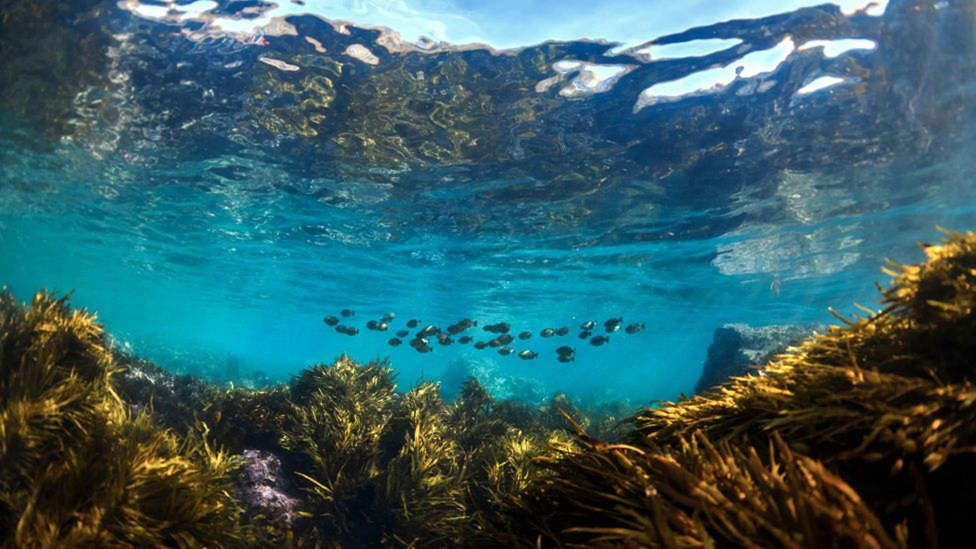
The chemistry behind ocean acidification
Written by: Alya Arief Azali
Excessive carbon dioxide emissions are a key driver in global warming, but did you know carbon dioxide also increases ocean acidity?
Ocean acidification is the rise of ocean acidity due to the absorption of excess carbon dioxide (CO2) in the atmosphere. The ocean holds many finely balanced chemical reactions. However, anthropogenic sources of CO2 puts these reactions out of balance, resulting in adverse effects, such as ocean acidification.
We can use chemistry to explain the process of increased ocean acidity. Specific chemical reactions can shift forward or backwards, like the reactions used to describe ocean acidification. These reactions are called equilibriums and proceed forward or backward depending on the system's concentration, pressure and temperature. When these factors in an equilibrium are out of balance, the reaction will change its direction to maintain balance. You can liken this balance to that of a weighted scale.
In the case of ocean acidification, we start with a balanced system, like so:

The carbon dioxide produced by humans increases the concentration of carbon dioxide in the atmosphere and the water, putting the scale off balance, like so:

So, the amount of hydrogen ions (H+) in the system increases to bring the system back to equilibrium.

This increase in hydrogen ions increases the acidity of the water.
Many marine animals combine calcium and carbonate, building their shells and skeletons from the mineral calcium carbonate (CaCO3). Calcium carbonate also exists in equilibrium in water. As the acidity of the water increases, hydrogen ions react with carbonate to form bicarbonate. The formation of bicarbonate reduces the amount of carbonate available for marine life to form their shells and skeletons. Increased acidity can dissolve calcium carbonate structures because the equilibrium shifts to the right to compensate for the lost carbonate. In fact, in cases of very high acidity, these structures may be dissolving faster than it takes calcifying creatures, such as crabs, sea urchins and coral, to build them.

Suppose these creatures lose the ability to form integral structures. In that case, it can lead to the eventual extinction of the animal and its many associated species. Moreover, species extinction can throw ecological systems out of balance, resulting in substantial trickle-down effects on human food security and livelihood.
The only long-term solution to ocean acidification is decreasing carbon dioxide emissions. Governments have set international targets to keep global warming under check. However, these targets focus on lowering non-CO2 greenhouse gases such as methane and nitrous oxide, which have a higher global warming potential and are less costly to reduce. Ocean acidification, driven by excess CO2 emissions, has no set target. Instead, this area is left for individual countries to decide on.
The natural world relies heavily upon balance. It is time humans consider their actions and impacts as part of this balance, and governments make policies that support the complex life systems around us.
References
Doney, SC, Busch, DS, Cooley, SR & Kroeker, KJ 2020, 'The Impacts of Ocean Acidification on Marine Ecosystems and Reliant Human Communities', Annual Review of Environment and Resources, vol. 45, no. 1, 2020/10/17, pp. 83-112.
Dupont, S 2013, Ocean acidification is chemistry, not conjecture, viewed 19/03/23, <https://theconversation.com/ocean-acidification-is-chemistry-not-conjecture-15497>.
EPA 2022, Effects of Ocean and Coastal Acidification on Marine Life, viewed 19/03/23, <https://www.epa.gov/ocean-acidification/effects-ocean-and-coastal-acidification-marine-life#:~:text=Many%20ocean%20plants%20and%20animals,calcium%20carbonate%20calcium%20carbonate%203.>.
Harrould-Kolieb, E 2015, Ocean acidification: the forgotten piece of the carbon puzzle, viewed 19/03/23, <https://theconversation.com/ocean-acidification-the-forgotten-piece-of-the-carbon-puzzle-50247>.
Scott, K 2021, COP26 failed to address ocean acidification, but the law of the seas means states must protect the world’s oceans, viewed 19/03/23, < https://theconversation.com/cop26-failed-to-address-ocean-acidification-but-the-law-of-the-seas-means-states-must-protect-the-worlds-oceans-171949>.